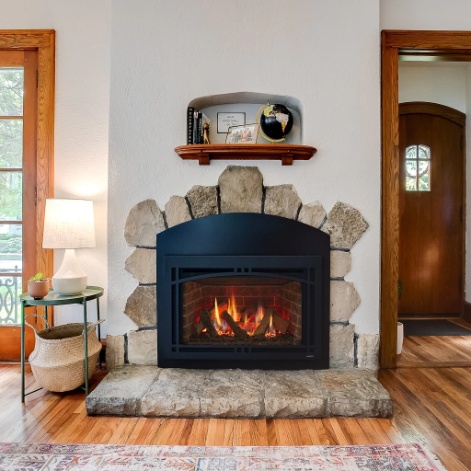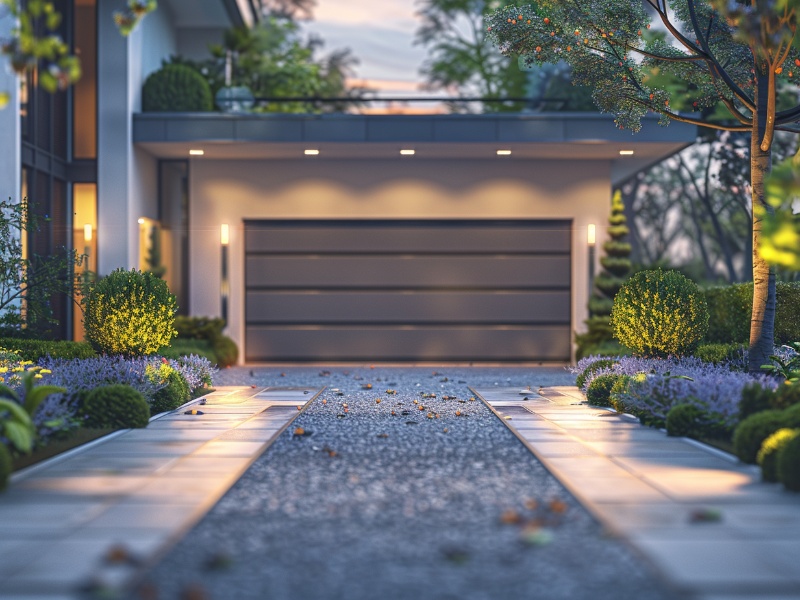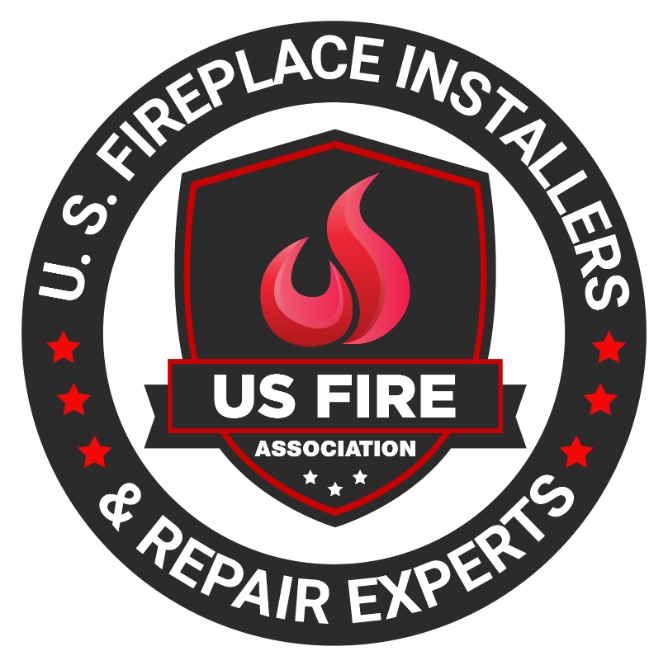Table of Contents
- 1 What is an Electric Fireplace?
- 2 Why Choose an Electric Fireplace?
- 3 What are the Different Types of Electric Fireplaces?
- 4 How to Make an Electric Fireplace Look Built-in?
- 5 What are the Benefits of Making an Electric Fireplace Look Built-in?
- 6 What are the Safety Precautions for Using an Electric Fireplace?
- 7 Frequently Asked Questions
Looking to add a cozy ambiance to your home without the hassle of a traditional fireplace? Electric fireplaces may be the perfect solution for you! In this article, we will explore what electric fireplaces are, why they are a great choice, the different types available, and most importantly, how to make your electric fireplace look built-in for a seamless and stylish addition to your living space.
We will also discuss the benefits of this customization and important safety precautions to keep in mind.
Let’s get started!
What is an Electric Fireplace?
An electric fireplace is a modern heating appliance that not only provides warmth but also enhances the ambiance of any space with its sleek design and seamless integration.
Its heating capabilities make it a practical solution for adding warmth to a room without the hassle of traditional fireplaces, eliminating the need for venting or chimney cleaning. The cozy atmosphere it creates is perfect for chilly evenings, allowing you to relax and unwind in front of a beautiful, glowing fire.
Electric fireplaces come in a variety of styles, from minimalist to ornate, making them adaptable to different interior design preferences. Whether you prefer a contemporary look or a more traditional feel, an electric fireplace offers both functionality and aesthetic appeal in one attractive package.
Why Choose an Electric Fireplace?
Choosing an electric fireplace for your home is a smart decision that not only adds to the aesthetics but also serves as a practical home improvement solution, enhancing the ambiance with its warmth and modern appeal.
These fireplaces are incredibly versatile and can be easily installed in various rooms, offering a hassle-free heating solution without the need for chimneys or vents. They provide a cozy atmosphere during chilly evenings, creating a welcoming environment for your family and guests.
Electric fireplaces come in a wide range of styles and designs, allowing you to select one that complements your existing decor and elevates the overall look of your living space effortlessly.
What are the Different Types of Electric Fireplaces?
Electric fireplaces come in various types, including wall-mounted options that save space, freestanding models for flexibility, and inserts that offer a seamless look when integrated into existing mantels or surrounds.
Wall-mounted electric fireplaces are perfect for those looking to maximize floor space as they are mounted directly onto the wall, creating a modern and sleek ambiance.
On the other hand, freestanding electric fireplaces provide versatility, allowing you to easily move them from room to room for added warmth and style.
Inserts are ideal for homeowners who want a built-in fireplace look without the hassle of construction; they can be effortlessly integrated into an already existing mantel or surround for a customized and polished appearance.
Wall-mounted Electric Fireplaces
Wall-mounted electric fireplaces are popular choices for those seeking a modern and space-saving heating solution that can be easily installed to create a seamless look in any room.
These sleek fireplaces not only add a touch of elegance to the decor but also provide efficient heating without the need for venting or a chimney. With various designs and sizes available, they blend seamlessly into different room settings, offering versatility to match the aesthetic of any home.
Installing a wall-mounted electric fireplace is a breeze; most models come with simple mounting hardware and instructions, making it a DIY-friendly project that doesn’t require extensive construction work or renovations. This hassle-free installation process makes them ideal for those looking to enhance their living space without major disruptions.
Freestanding Electric Fireplaces
Freestanding electric fireplaces offer flexibility in design and placement, allowing homeowners to enhance the aesthetics of their space while enjoying the warmth and ambiance these units provide.
With various sizes, shapes, and finishes available, freestanding electric fireplaces can seamlessly blend into a range of home decor styles, from modern and minimalist to traditional and cozy.
Their versatility in placement options further adds to their appeal, as these units can be easily incorporated into living rooms, bedrooms, or even unconventional spaces like offices or dens.
Whether you prefer a sleek glass design or a more classic wooden finish, there is a freestanding electric fireplace to suit every taste and space layout.
Electric Fireplace Inserts
Electric fireplace inserts are perfect for retrofitting existing mantels or surrounds, offering a seamless integration that transforms the space into a cozy and inviting environment.
These inserts not only provide the visual appeal of a traditional fireplace but also bring the added benefits of convenience and efficiency. With easy installation and minimal maintenance required, they are a practical choice for those looking to enhance the ambiance of their living spaces without the hassle of a wood-burning fireplace.
The flickering flames and customizable heat settings of electric fireplace inserts allow for a customizable experience, creating a focal point that elevates the overall aesthetics of any room.
How to Make an Electric Fireplace Look Built-in?
Transforming an electric fireplace into a built-in feature involves a series of steps such as careful measurement, DIY installation, and adding personalized finishing touches for a professional and customized look.
Once you have determined the dimensions of your space and the electric fireplace unit, the next step is to create a frame or enclosure that will seamlessly integrate the fireplace into the wall. This can be achieved by using wood panels, drywall, or even surrounds specifically designed for built-in installations. Make sure to secure the frame properly to the wall for stability and safety. For added customization, consider painting or staining the frame to match your existing decor and style.
Measure and Plan the Space
Before beginning the integration of an electric fireplace as a built-in feature, it is crucial to take accurate measurements and plan the space transformation to ensure a seamless and visually appealing outcome.
This initial process of measuring and planning not only determines the feasibility of incorporating the fireplace but also plays a pivotal role in creating a cohesive design that enhances the overall aesthetic of the space.
Precise measurements ensure that the fireplace fits seamlessly into the designated area, avoiding any awkward protrusions or gaps.
Effective space planning sets the foundation for a successful transformation, allowing for the optimal positioning of the fireplace to maximize both visual appeal and functionality in the final result.
Choose the Right Style and Size of Electric Fireplace
Selecting the appropriate style and size of the electric fireplace is essential to ensure a harmonious integration that enhances the overall design and aesthetics of the space.
The style of the electric fireplace should complement the existing decor, whether it’s modern, traditional, or eclectic. Opting for a sleek, minimalist design can create a contemporary vibe, while a more intricate design with ornate details can add a touch of elegance.
Considering the size of the fireplace in relation to the room dimensions is crucial for achieving a balanced look. A properly sized fireplace will not only fit seamlessly but also serve as a focal point that ties the room together, elevating its ambiance.
Install the Fireplace into the Wall
The installation process of embedding the electric fireplace into the wall involves framing the designated area and executing precise construction to achieve a seamless and integrated look.
- This process begins with carefully measuring the dimensions for the fireplace unit’s placement within the wall.
- Once the measurements are determined, the framing can commence. To create a sturdy foundation, it is essential to use quality lumber for the framing.
- Ensuring that the framing is level and securely anchored to the wall is crucial to support the weight of the electric fireplace.
- After the framing is complete, the construction stage involves drywall installation and finishing to seamlessly blend the fireplace unit with the surrounding wall surface.
Add Trim and Molding
Enhancing the visual appeal of the built-in electric fireplace involves adding tasteful trim and molding that not only provide a polished look but also contribute to a cohesive and professional appearance.
The process of adding trim and molding to the fireplace starts with carefully selecting the right materials that complement the existing décor.
Once you have chosen the trim, measuring and cutting it to fit perfectly around the edges of the fireplace is crucial for a seamless finish.
Installing the trim requires precision and attention to detail to ensure it aligns perfectly, framing the fireplace beautifully.
Molding can then be added to further enhance the design, creating a sense of depth and elegance.
These finishing touches not only elevate the overall aesthetics but also create a harmonious transition between the fireplace and the surrounding space.
Paint or Stain the Surrounding Area
Painting or staining the surrounding area of the electric fireplace allows for customization and personalization, enhancing the overall decor while creating a cohesive and integrated look.
This process not only transforms the fireplace surroundings but also offers an opportunity to harmonize its aesthetics with the rest of the room.
To further elevate the visual appeal, consider adding decorative elements like a mantel clock, framed artwork, or cascading plants. These design accents can create a focal point around the fireplace, drawing attention and adding a touch of elegance to the space.
Mixing textures such as plush rugs, cozy throw blankets, and accent pillows can bring warmth and coziness to the area, making it inviting and stylish.
Add Decorative Elements
Incorporating decorative elements around the electric fireplace allows for a personalized touch and enhances the overall interior design, creating a cohesive and visually appealing space.
This personalized touch not only adds warmth and character to the room but also serves as an opportunity to showcase your unique style and personality.
From elegant mantel decorations to chic candle holders, the options are endless. Consider adding a touch of greenery with potted plants or a stylish arrangement of flowers to bring life and freshness to the space.
Incorporating mirrors or artwork above the fireplace can create a focal point and enhance the visual impact of the room. These decorative elements play a vital role in transforming a simple electric fireplace into a sophisticated and inviting setting.
Hide Cords and Wires
Ensuring that cords and wires associated with the electric fireplace are concealed effectively is essential for achieving a seamless integration that enhances the professional look and overall appeal of the built-in feature.
One effective way to hide these cords and wires is by utilizing cable management solutions such as wall-mounted cord covers or raceways to discreetly route them along the walls. Another method is to incorporate furniture or décor strategically to mask the cords while still maintaining easy access. Using cord clips or velcro straps to bundle and secure cords can help keep them organized and out of sight. By employing these techniques, you can create a clean and polished aesthetic for your electric fireplace without compromising on functionality.
What are the Benefits of Making an Electric Fireplace Look Built-in?
Transforming an electric fireplace to have a built-in appearance offers numerous benefits, including customization opportunities, space-saving solutions, and the ability to completely transform the look and feel of a room.
By converting an electric fireplace into a built-in feature, homeowners can tailor the design to suit their preferences, whether it be modern, traditional, or rustic. This customization allows for a seamless integration with the existing decor, creating a cohesive and personalized aesthetic.
The built-in design helps optimize space by eliminating the need for a separate mantel or standalone unit, allowing for a more streamlined and spacious environment. This DIY project not only adds value to the home but also enhances its overall style and ambiance, making it a worthwhile investment for homeowners looking to elevate their living spaces.
Customization and Personalization
The process of making an electric fireplace look built-in allows for extensive customization and personalization options, enabling homeowners to tailor the design to their specific preferences and interior decor.
This approach offers individuals the freedom to create a seamless integration of the fireplace into their living space, enhancing the overall aesthetic appeal. By customizing the built-in look, individuals can choose materials, colors, and finishes that complement their existing furniture and style choices. The tailored appearance of a built-in electric fireplace adds a sense of cohesion and sophistication to any room, providing a focal point that reflects the homeowner’s unique personality and design sensibilities.
Saves Space
Opting for a built-in electric fireplace can save valuable space within a room. This is especially true when retrofitting existing mantels or surrounds. They provide a sleek and integrated heating solution without occupying additional floor space.
This streamlined approach maximizes the functionality of the room. The need for additional furniture or freestanding heating units is eliminated. Hence, a more open and organized living space is created. The seamless integration of a built-in electric fireplace also enhances the aesthetic appeal of the room. It gives a modern and refined touch. By choosing this space-saving option, homeowners can enjoy the cozy ambiance and warmth of a fireplace. They do not have to compromise on space or design.
Increases Home Value
The addition of a built-in electric fireplace can enhance the overall appeal of a home. It contributes to an increase in its market value. This is due to the seamless integration and modern aesthetics that this feature provides.
This feature not only adds a touch of luxury to the living space. It also serves as a functional heating solution, creating a cozy and inviting atmosphere. The sleek design of a built-in electric fireplace seamlessly blends into the decor, elevating the visual appeal of the room. Homebuyers are often drawn to properties with modern upgrades like built-in electric fireplaces. They can set your home apart in a competitive market. They also potentially lead to a quicker sale at a higher price.
Easy to Install and Remove
Built-in electric fireplaces offer the advantage of being relatively easy to install and remove. This makes them an ideal choice for DIY enthusiasts seeking a versatile heating solution. The heating solution can be adjusted or relocated as needed.
The simplicity of setting up built-in electric fireplaces adds to their charm. They often require minimal tools and expertise to install. This reduces the need for professional assistance. The DIY-friendly nature not only saves homeowners time and money. It also allows for personalized placement within the home, catering to individual preferences. The adaptability of these fireplaces enables users to experiment with different room layouts. Users do not have to worry of permanent fixtures. This provides a level of flexibility that traditional fireplaces can’t match.
If you prefer professional assistance, contact the experts at Dreifuss Fireplaces.
What are the Safety Precautions for Using an Electric Fireplace?
Ensuring a safe environment when using an electric fireplace involves observing essential safety precautions. These precautions include keeping flammable objects away and unplugging when not in use. It also includes maintaining regular cleaning and maintenance routines.
It is crucial to never leave the electric fireplace unattended while in operation to prevent any potential hazards. Always follow the manufacturer’s guidelines for installation and usage to ensure the electric fireplace functions correctly and safely.
Regularly inspect the power cord and plug for any signs of wear or damage. Refrain from using the fireplace if there are any issues. Cleaning the fireplace regularly can help maintain its efficiency and safety. This includes dusting the exterior and checking for debris inside,
Keep Flammable Objects Away
To prevent hazards and maintain safety, it is crucial to keep flammable objects a safe distance from the fireplace. This ensures that no combustible materials come into contact with the heating element.
Common flammable items that should be kept away from electric fireplaces include curtains, paper, clothing, rugs, and upholstered furniture. These materials can easily ignite if they get too close to the heat source, posing a significant risk of fire. It is also important to avoid placing decorations like dried flowers or candles near the fireplace. They can catch fire quickly. By being mindful of what is placed near the electric fireplace, you can enjoy its warmth and ambiance safely.
Unplug When Not in Use
A crucial safety practice when using an electric fireplace is to unplug the unit when not in use. This minimizes the risk of electrical accidents and ensuring that the appliance is not drawing power unnecessarily.
This simple yet effective measure not only enhances safety but also helps in conserving energy. By disconnecting the electric fireplace from the power source during inactive periods, you can significantly reduce your electricity consumption. This allows you to thereby contributing to a more eco-friendly household. Unplugging the unit prevents potential overheating issues that could arise from leaving it connected to power continuously.
So, make it a habit to unplug your electric fireplace when it’s not being used.
Regularly Clean and Maintain
Maintaining a clean electric fireplace is essential for its efficient operation and longevity,. They require regular cleaning and maintenance tasks. These tasks include dusting, inspecting cords, and ensuring proper ventilation.
Regular cleaning also helps to prevent potential safety issues. Buildup of dust and debris can pose a fire hazard. Regularly clean the fireplace exterior with a soft cloth and mild detergent. This will maintain its appearance and functionality. Checking the electrical connections and ensuring that the power supply is stable are crucial steps. These steps prevent malfunctions and ensure safe operation. Performing these maintenance tasks not only prolongs the lifespan of the electric fireplace. It also ensures a cozy and safe environment in your living space.
Frequently Asked Questions
1. What is an Electric Fireplace?
An electric fireplace is a modern appliance that provides warmth. It also enhances the ambiance of any room with its sleek design. It eliminates the need for venting or chimney cleaning, making it a practical and attractive heating solution.
2. Why Choose an Electric Fireplace?
Choosing an electric fireplace adds aesthetic value to your home. It also provides a practical heating solution without the need for chimneys or vents. They are versatile, easy to install in various rooms, and come in a wide range of styles.
3. What are the Different Types of Electric Fireplaces?
Electric fireplaces come in wall-mounted, freestanding, and insert models. Wall-mounted options save space, freestanding models provide flexibility, and you can integrate inserts into existing mantels for a built-in look.
4. How to Make an Electric Fireplace Look Built-in?
To make an electric fireplace look built-in, first measure and plan the space. Next, choose the right style and size. Then, install the fireplace into the wall. Finally, add trim and molding. Personalize the surrounding area with paint or stain and decorative elements for a customized look.
5. What are the Benefits of Making an Electric Fireplace Look Built-in?
Making an electric fireplace look built-in allows for customization, and it saves space. It also increases home value, and is easy to install and remove. It transforms the room’s look and feel, making it a valuable addition to your home.
6. What are the Safety Precautions for Using an Electric Fireplace?
Ensure safety by keeping flammable objects away, unplugging the fireplace when not in use, and maintaining regular cleaning. Follow the manufacturer’s guidelines and inspect the power cord and plug for damage to prevent hazards.
Latest Articles

What Is An NG (Natural Gas) Indicator And Why You Need It For Your Fireplace
Table of Contents1 Understanding Natural Gas Fireplaces2 What is an NG Indicator?3 Importance of NG Indicators for Safety4 Types of NG Indicators5 Installation and Maintenance of NG Indicators6 Signs of a Faulty NG Indicator7 Frequently Asked Questions Natural gas fireplaces are a favored option among numerous homeowners due to their convenience and effectiveness. But, what is an NG (Natural Gas) indicator and why you need it for your fireplace? It is imperative to comprehend how they function and the significance of having an NG (Natural Gas) indicator for safety purposes. This article delves into the definition and significance of NG indicators. We will discuss the potential hazards associated with the absence of one and the various types of indicators accessible. Also, we will discuss installation and maintenance recommendations, and methods to recognize and rectify issues with malfunctioning indicators. Stay well-informed and ensure the safety of your home by referring to this exhaustive guide. Understanding Natural Gas Fireplaces Natural gas fireplaces serve as an efficient and convenient heating option for numerous households. They utilize natural gas as a fuel source to deliver consistent warmth and ambiance. How They Work and Why They Need NG Indicators The operation of natural gas fireplaces involves igniting natural gas to generate heat. This process requires diligent monitoring to ensure both safety and efficiency, a task facilitated by the use of NG indicators. NG indicators play a critical role in detecting potential gas leaks. They enable residents to promptly address and mitigate any associated hazards. Through continuous monitoring of gas levels and providing timely warnings and alerts, NG indicators uphold a secure indoor environment. It is imperative to ensure that these indicators function properly to facilitate the effective operation of natural gas fireplaces. This helps mitigate the inherent risks linked to gas leaks. What is an NG Indicator? An NG indicator is a specialized device equipped with advanced sensors and technology. It is specifically designed to detect natural gas leaks and monitor gas pressure in appliances, such as fireplaces. Definition and Purpose The NG indicator functions as a detector that monitors gas appliances for potential leaks. It provides essential functionality to ensure safety in households utilizing natural gas. These detectors play a crucial role in protecting residences by notifying occupants of dangerous gas leaks long before they escalate into perilous situations. Through continuous monitoring of gas levels in the vicinity, NG indicators offer an additional layer of protection. This is particularly important in properties that rely on gas-operated fireplaces or stoves. These devices not only help avert potential disasters but also enhance the overall peace of mind of homeowners. They assure them that their living spaces are equipped with reliable safety features. Importance of NG Indicators for Safety Natural gas indicators are essential for maintaining safety in households equipped with natural gas appliances. These devices serve as a proactive measure to promptly detect gas leaks. This offers homeowners a sense of security and assurance. Potential Dangers of Not Having an NG Indicator The absence of an NG indicator in residences equipped with natural gas appliances can pose significant hazards. This includes the risk of undetected gas leaks , carbon monoxide poisoning , and pilot outages that may lead to dangerous situations. These potential risks can profoundly impact indoor air quality. They directly influence the health and safety of individuals residing in the household. Undetected gas leaks can go unnoticed, gradually permeating the air and creating a potentially explosive environment. Insufficient ventilation from undetected exposure to carbon monoxide can lead to serious health complications. These range from mild symptoms such as dizziness to fatal poisoning. Without proper monitoring from an NG indicator, families are left susceptible to these concealed threats. This underscores the critical importance of implementing proactive measures to mitigate such risks. Types of NG Indicators Indicators for Natural Gas (NG) are available in diverse types. Each presents distinct detection capabilities tailored to specific requirements, encompassing both manual and automated alternatives. Manual vs. Automatic Indicators Manual NG indicators require user intervention for monitoring gas levels and identifying leaks. On the other hand, automatic indicators employ sophisticated technology to deliver continuous, real-time monitoring. This heightened efficiency and oversight enhance safety protocols. Conventional manual indicators rely on individuals to physically inspect and evaluate gas levels periodically. This renders them more susceptible to human errors. Conversely, automatic indicators feature sensors capable of promptly detecting even the most minute fluctuations in gas levels. This establishes a more dependable and precise monitoring mechanism. Automatic indicators can activate alerts and shut-off systems upon detecting a leak. This ensures immediate action to avert potential hazards. This advanced technology enhances safety protocols and instills a sense of command and assurance among users. Installation and Maintenance of NG Indicators The reliable and accurate performance of NG indicators necessitates proper installation and consistent maintenance. This often entails professional installation and adherence to recommended service guidelines. Proper Installation and Regular Maintenance Tips The proper installation of NG indicators involves adhering to the specifications in the user manual. Maintenance protocols entail strict adherence to a predetermined maintenance schedule to ensure sustained operational efficiency. During the installation phase, it is imperative to verify that the NG indicators are securely affixed in the designated location as stipulated by the manufacturer. Crucial steps include confirming power source compatibility and ensuring proper grounding of the device to optimize performance. Calibration of the indicator must be executed meticulously to ensure precise readings. Regarding maintenance, essential practices include regular inspection for signs of wear, thorough cleaning of the indicator components, and routine functionality tests. By allocating time to a consistent maintenance regimen, the NG indicator can operate with optimal efficiency over an extended duration. Signs of a Faulty NG Indicator Recognizing indicators of a malfunctioning NG indicator is essential for upholding safety and performance standards. Inaccuracies and detection issues can undermine the efficacy of these devices. Identifying and Addressing Issues The process of identifying and addressing issues related to NG (natural gas) indicators requires a systematic troubleshooting approach. This ensures their optimal performance

What You Need To Know About Gas Log Set Safety And Installation Considerations
Table of Contents1 Understanding Gas Log Sets2 Safety Considerations for Gas Log Sets3 Installation Guidelines for Gas Log Sets4 Maintaining and Troubleshooting Gas Log Sets5 Frequently Asked Questions Gas log sets are a favored option among homeowners seeking to enjoy the comfort and atmosphere of a conventional fireplace without the inconvenience of wood. This article tells you what you need to know about gas log set safety and installation considerations. Before incorporating one into your residence, it is imperative to understand the safety considerations associated with their use. This discussion delves into the potential hazards linked with gas log sets. It presents crucial precautions to uphold the safety of your home. Also, it outlines proper installation procedures and offers insight into common errors to avoid. Finally, it provides advice on maintenance and troubleshooting. Gain comprehensive knowledge on gas log set safety and installation considerations. Understanding Gas Log Sets Comprehending gas log sets is essential for individuals seeking to elevate their fireplace experience, and for gas lag set safety and installation. These heating appliances can operate on either natural gas or propane. In addition, they are available in a range of styles, including vented, ventless, and vent-free options. They provide an array of benefits and customization opportunities through various fireplace accessories. What are Gas Log Sets? Gas log sets are meticulously crafted artificial logs. They are designed to imitate the appearance and functionality of authentic wood logs within fireplaces. These gas log sets typically consist of ceramic or refractory concrete logs that have been skillfully molded and painted. This allows them to replicate the natural grain and texture of real wood. The logs are arranged in various configurations within the fireplace. They establish a realistic and welcoming ambiance. In addition to the logs, gas log sets often include fireplace accessories such as glowing embers. Accessories also include decorative stones, and even pine cones to enhance the overall aesthetic appeal. Homeowners can select from an array of placement options. These include traditional wood stack, cascading driftwood, or a contemporary geometric arrangement. Homeowners can align their preferred style and design preferences. Safety Considerations for Gas Log Sets Safety considerations for gas log sets are of utmost importance to guarantee a secure and pleasant fireplace experience. It is essential to address potential hazards such as carbon monoxide exposure, gas leaks, and fire safety to maintain a safe environment for homeowners. Potential Hazards and Precautions Gas log sets come with potential hazards that must be taken seriously, including the risks of gas leaks, carbon monoxide poisoning, and fire incidents. It is imperative to establish and adhere to rigorous safety measures to ensure the well-being of individuals and properties involved in the use of gas log sets. Gas leaks represent a significant hazard when utilizing gas log sets. They can result in the accumulation of combustible gas within the premises, heightening the possibility of explosions or fires. Carbon monoxide, an insidious gas generated during incomplete combustion, poses a grave threat due to its colorless and odorless nature, making it undetectable without proper monitoring. To address these risks effectively, it is vital to install carbon monoxide detectors and gas leak sensors in the vicinity of the gas logs. Routine maintenance checks on the gas log system, including cleaning and inspection procedures, are critical to ensure safe operations and the prompt identification of potential issues. In case of a gas leak or suspected presence of carbon monoxide, immediate evacuation of the affected area is paramount, followed by prompt contact with emergency services. Recognizing the distinct odor of rotten eggs associated with natural gas can serve as an early warning sign, prompting swift actions to avert any potential accidents. Installation Guidelines for Gas Log Sets The installation of a gas log set necessitates meticulous planning and strict adherence to specific guidelines. This includes verifying a secure gas connection, ensuring proper gas lines are in place, and complying with local building codes. Often, the complexity of these requirements may require the expertise of a certified technician. Proper Installation Techniques The appropriate installation procedures for gas log sets involve the secure connection of gas lines, meticulous adherence to installation manuals, and strict compliance with local building codes. It is imperative to prioritize the guarantee of secure gas connections to avert leaks and potential safety hazards. During the installation of gas log sets, utilizing suitable sealants and fittings is essential to establish a tightly sealed connection. The correct installation of gas lines is critical for both the safety and operational efficacy of the gas log set. Reference to the installation manual is highly advisable for detailed, step-by-step guidance to prevent inaccuracies and ensure the successful establishment of the gas log set. Consistently adhering to building codes and regulations upholds safety standards. Seeking guidance and confirmation from a certified technician before and after installation can offer invaluable support and assurance throughout the process. Common Installation Mistakes to Avoid It is imperative to avoid common installation errors to ensure the secure and effective operation of gas log sets. This includes verifying proper gas connections and compliance with building codes. Improper gas connections can result in leaks and potential hazards, underscoring the importance of verifying the tightness and correct alignment of all fittings. Failure to adhere to building codes can lead to structural complications, penalties for non-compliance, or even safety concerns. To prevent these oversights, it is advised to consult the manufacturer’s installation guidelines and strictly adhere to local regulations. Engaging a certified technician for the installation of gas log sets guarantees that the procedure is carried out accurately and securely. This provides assurance that the system is functioning as intended. Maintaining and Troubleshooting Gas Log Sets Regular maintenance and troubleshooting of gas log sets are imperative to uphold their optimal performance and safety. This includes thorough examination of the pilot light, pilot assembly, and other gas appliances to preserve heating efficiency and promptly resolve any arising issues. Tips for Maintenance and Repair Ensuring the proper maintenance of your gas log set necessitates conducting

Key Considerations For Using Compressed Liquid Propane In Fireplace Installation
Table of Contents1 What is Compressed Liquid Propane?2 Benefits of Using Compressed Liquid Propane in Fireplaces3 Safety Precautions for Installing Compressed Liquid Propane Fireplaces4 Installation Process for Compressed Liquid Propane Fireplaces5 Maintenance and Care for Compressed Liquid Propane Fireplaces6 Alternative Fuel Options for Fireplaces7 Frequently Asked Questions If you are contemplating the use of compressed liquid propane in your fireplace installation, this discussion will delve into the advantages of adopting this alternative fuel option. These benefits include enhanced efficiency, cost savings, and important safety precautions to consider. Furthermore, a detailed step-by-step guide on the installation process will be provided, along with recommendations for maintenance and care. A comparison of various fuel options for fireplaces will also be conducted to assist you in making an informed decision. We encourage you to stay engaged to gain insights into optimizing your fireplace’s capabilities with compressed liquid propane. What is Compressed Liquid Propane? Compressed Liquid Propane is a versatile energy source contained in a high-pressure propane tank. It finds extensive utility in both residential and commercial settings, prominently including fireplaces. Recognized for its convenience and efficiency, Compressed Liquid Propane emerges as a favored option for heating residential spaces and facilitating culinary pursuits across various environments. Additionally, it serves as a viable fuel substitute in vehicular contexts, portable cooktops, and outdoor grilling scenarios due to its propensity for clean combustion. The attribute of portability, coupled with ease of storage, positions Compressed Liquid Propane as an optimal energy source for individuals residing off the conventional grid. It is also great for engaging in outdoor activities such as camping and recreational vehicle (RV) travel. Moreover, the high energy density inherent to Compressed Liquid Propane renders it a dependable choice for sustaining generators during instances of power disruptions. Benefits of Using Compressed Liquid Propane in Fireplaces Utilizing Compressed Liquid Propane for fireplace installation presents several benefits. These include enhanced fuel efficiency, convenience, cost-effectiveness, and a favorable environmental footprint. These attributes render it a recommended option for heating solutions, applicable to both on-grid and off-grid settings. Efficiency and Cost Savings The utilization of Compressed Liquid Propane in fireplaces offers significant advantages, notably in terms of high fuel efficiency and cost-effectiveness. These attributes are underscored by the exceptional BTU rating and overall heating efficiency of Compressed Liquid Propane. The elevated fuel efficiency exhibited by Compressed Liquid Propane fireplaces necessitates less fuel to generate the same level of heat compared to traditional wood-burning fireplaces or electric heating systems. Consequently, homeowners can realize cost savings on their heating expenditures over an extended period. Moreover, the clean-burning characteristics of propane minimize maintenance costs linked to soot and ash cleanup. This further enhances the cost-effectiveness of employing propane fireplaces. Safety Precautions for Installing Compressed Liquid Propane Fireplaces Ensuring safety is of utmost importance during the installation of Compressed Liquid Propane fireplaces. This requires strict adherence to safety regulations, meticulous attention to proper ventilation requirements, careful control of ignition sources, and the incorporation of carbon monoxide and gas leak detection systems. Important Safety Measures Essential safety protocols for the installation of Compressed Liquid Propane fireplaces encompass adherence to fire safety regulations. Engaging in professional assessments and employing sophisticated gas leak and carbon monoxide detection mechanisms is crucial. Professional evaluations play a critical role in identifying any prospective hazards or irregularities within the fireplace infrastructure. These assessments are vital in ensuring the operational integrity of all components and compliance with safety protocols. Routine inspections serve to forestall potential fire incidents, gas discharges, or carbon monoxide emissions that could pose significant threats to both the property and individuals in the vicinity. The utilization of advanced gas leak and carbon monoxide detection systems serves as an additional safeguard by promptly notifying occupants of any elevated levels of these hazardous gases. Installation Process for Compressed Liquid Propane Fireplaces The installation procedure for Compressed Liquid Propane fireplaces encompasses several critical steps. These include: Adhering to installation guidelines Correctly positioning the propane tank Ensuring precise gas line installation Optimizing heat output Monitoring pressure regulation Establishing the pilot light Step-by-Step Guide The installation process of Compressed Liquid Propane fireplaces involves a systematic approach. This begins with the construction of the firebox, followed by the installation of the gas control valve, setup of the ignition system, design of the flue, and verification of a suitable combustion air supply. The construction of the firebox assumes critical importance as it serves as the foundation of the fireplace structure. It securely holds the combustible materials in place. Subsequently, the gas control valve plays a key role in managing the propane flow, guaranteeing safe and efficient operation. The installation of the ignition system facilitates convenient and reliable fire initiation. Designing the flue is a necessary step to direct exhaust gases outside, thus preventing their accumulation indoors. Moreover, ensuring a proper combustion air supply is essential to sustain optimal burning conditions and enhance fuel consumption efficiency. Each component contributes significantly to the functionality and safety of the fireplace installation process. This underscores the importance of meticulous attention to detail and adherence to established protocols. Maintenance and Care for Compressed Liquid Propane Fireplaces Consistent maintenance and attention to Compressed Liquid Propane fireplaces are imperative to guarantee their optimal functionality. This includes adherence to prescribed maintenance protocols, regular chimney upkeep, prevention of soot accumulation, and scheduling of routine propane deliveries and professional inspections. Tips for Keeping Your Fireplace in Good Condition For the maintenance of your Compressed Liquid Propane fireplace, it is essential to conduct regular checks on ignition sources. Monitor flame appearance, clean the gas burner and pilot assembly, and verify the correct operation of the safety shut-off valve. The inspection of ignition sources requires a detailed examination of the electronic igniter. This helps identify any signs of damage or corrosion and ensures proper sparking upon activation. Monitoring flame appearance involves observing a consistent blue flame with minimal flickering, which signifies efficient combustion. Cleaning the gas burner and pilot assembly can be performed using a soft brush or compressed air to eliminate any dirt or debris that may
